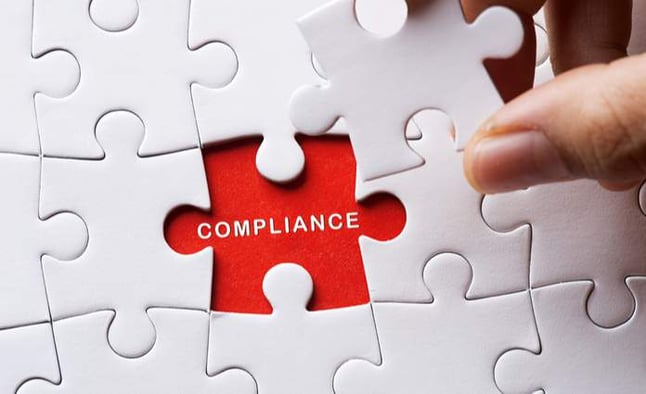Setting up The Wholly Foreign Owned Enterprise (WFOEs) in ShenZhen China

Shenzhen is located on the western coast of the Pacific Ocean and at the central section of the north-south coastline of China. Facing the opportunities and challenges of the 21st century, Shenzhen has set its long-term strategic objectives for social and economic development. In near future, Shenzhen is planned to become one of the international economic, financial and trade centers of the world.
Setting up a company in Shenzhen is a good choice for companies that are in computer software, IT, microelectronics and components, video and audio products, electromechanical integration, and key projects of light industry and energy.
The Wholly Foreign Owned Enterprise (WFOE) is a Limited liability company wholly owned by the foreign investor. The foreign company has sole responsibility for its profits and losses. Limited liability is recognized by the amount of registered capital injected into the business. It is required to register as a legal person who is restricted to certain businesses. The enterprise is able to implement strategies that effectively conform to the interests of the parent company abroad. Moreover, technology and know-how are given better protection.
To establish a WFOE in ShenZhen China, the project shall be examined and approved by the district authorities where the project is to be located. The foreign investor is required to entrust the authorized consultative bodies or agencies with the tasks of application and documents submission for approval..
Capital Contribution:
There is a minimum capital contribution required, known as registered capital, which varies according to the nature of business. The registered capital shall be matched with the actual business activities. There is NO real capital requirements since 2014.
Investor
The foreign investor may be a foreign company, enterprise, other economic organization, or a natural person.
(1) For a company/enterprise, the Certificate of Incorporation and Bank Reference Letter are required.
(2) For a natural person, the Identity Certificate and Bank Reference Letter are required.
-- the Certificate of Incorporation/Identity Certificate
--certified by the notary organ and the Chinese Embassy in your country
-- the Bank Reference Letter
-- issued by the bank in which foreign investor has a working or trading account and signed by an authorized bank officer
Process of Setup WFOE in China:
1. Reservation and Application of Company Name:
Prior to any of the following applications, the investor(s) should reserve a name for its prospective WFOE with ShenZhen Administration of Industry and Commerce (SAIC). SAIC requires that a proposed name and three other names be provided.
2. The Chinese name should be formatted as follows:
First word - company name; Second word - activity; Third word - location/name of town; Fourth word - company structure. The use of 'China' 'Sino' and 'International' are not permitted in the Chinese name unless very special permission is given, although they are permitted in the non-Chinese name.
3. Registration of Approval Certificate:
After the completion of Name Approval Notification, Approval letter and Approval Certificate are the next to register. At the time of application, Article of Association, Feasibility Study Report, Lease Agreement, etc. should be submitted to ShenZhen Municipal Commission of Commerce. The local Approval Authority will review all documentation and give instructions in accordance with the Company Law and local regulations. If all is up to standard, the authority is able to give its approval and issue the certificate within 10 to 15 working days upon receiving all the required documentation.
4. Business License and Organization Code Certificate:
Within 30 days after obtaining the approval certificate, the foreign investor will need to register and apply for a business license for the WFOE from the local SAIC. As part of this step, the foreign investor should submit similar documentation to the authority for approval and filing.
5. Once the business license is issued, the WFOE is deemed to be a legal person duly organized and existing under PRC laws and will have full operational rights to operate a business in China within the scope of its Business License.The organization code refer to the statutory code, the only and constant code identity given to every single organization, according to the compiling rules of national organization code. Application for Organization Code Certificate is purely a procedural step.
6 .Registration of Tax Registration Certificate:
Once your Organization Code registration Certificate is approved then you may proceed with applications to the local tax authority. At the same time, you should also apply for the company seal and legal representative seal from ShenZhen Municipal Police Bureau with the assistance of the authorized Carving Seal Agent.Together with Approval Certificate, Business License and other documents, the formal application form affixed with seals should be submitted to the authority for their examination and approval. Start from the second month after obtaining the Tax Registration Certificate, the WFOE is required to apply tax filling monthly / quarterly and inspection annually.
7. Other Certificates of WFOE:
-- Statistics Registration Certificate issued by Statistics Bureau;
-- Foreign Exchange Registration Certificate issued by State Administration of Foreign Exchange;
-- Financial Registration Certificate issued by Finance Bureau;
-- Customs Registration Certificate issued by Customs Bureau.
8. Post Incorporation:
Having obtained approval from the tax and foreign exchange authorities, you are legally entitled to open Foreign Currency Capital Account and RMB Basic Account. Then you may proceed with capital injection, capital verification and certificates renewal.
9. Information and Documents Required:
--name and address of WFOE;
-- WFOE's office rental contract;
-- a written application for the establishment of the WFOE;
-- the Feasibility Study Report covering items such as technological process, equipments, raw material supply, market survey, economic results, infrastructure facilities, expected profitability, etc;
-- the Articles of Association of the proposed WFOE;
-- a list containing the proposed chairman and the members of the WFOE board of directors and appointment letters;
--- the Certificate of Incorporation of the WFOE investor;
-- the Bank Reference Letter of the WFOE investor;
-- other documents as may be required by the Approval Authority
From 1st October 2016, China Ministry of Commerce has changed the foreign investment approval system into filing system. It means WFOE whose industry is not restricted type or prohibited type can directly start the business registration first and then complete the filling system on website of Ministry of Commerce. This change has greatly reduce the policy risk when foreign investor plans to start a WFOE in China.

Make Sure Your ShenZhen WFOE Structure Is Compliant
Keeping your China WFOE structure compliant, current and out of the cross hairs can be a challenging task. Chinese business law is diverse and complicated, and it is important that you stay on top of it. We are going to take a look at how you can make sure your China WFOE structure is currently compliant with these laws, and what steps you can take to prevent any unwanted scrutiny.
You must have someone in your company or preferably a consulting agency that actively follows and understands Chinese law. Current information isn’t always readily available and almost certainly not in English, so it is important to have someone keep their ear to the ground about any sudden changes or shifts in compliance laws. You will need someone actively monitoring this on the ground, as it changes with little or no warning, and where there’s smoke there’s fire.
How Do I know if My WFOE Structure is Currently Compliant?
There are essentially 4 points you need to look at to make sure your China WFOE structure is compliant and up to date:
Corporate Income Tax Compliance
Tax compliance requires the knowledge of a local tax accountant or similar resource. The State Administration of Taxation (SAT) oversees all kinds of tax paid by corporations, but only corporate income tax (CIT) requires annual reconciliation. The deadline for submitting the CIT Reconciliation Report to the Tax Bureau is May 31 every year, however, the investigation of the tax compliance could last to the end of the year, and companies should be prepared to provide supporting documents upon demand from the Tax Bureau.Every year around March, depending on the area, the local Tax Bureau will issue annual guidelines on CIT reconciliation. The CIT Reconciliation Report is examined by the Tax Bureau to see if all tax liabilities have been fulfilled under tax law. This has to be done annually and failure to comply could result in heavy penalties.
Statutory Annual Audit Report
Company Law mandates the annual audit of financial reports, with entity-specific laws like WFOE law requiring this audit to be conducted by a Certified Public Accountant(CPA) firm in China. The objective of this audit is to ensure companies are meeting Chinese financial and accounting standards.Usually, CPA firms start preparing annual audit reports in January, directly after closing last year’s account. The procedure takes all of two months, and the audit report needs to be finished before the May 31 tax-filing deadline.
Many foreign investors want to know exactly what’s going on in their China WFOE, and an upgrade to an in-depth audit done according to Western best practices, someone to design, supervise and assist with audit execution are now becoming commonplace.
Audit Report for Foreign Exchange Reconciliation
All forex transactions in and out of China are strictly controlled by the State Administration of Foreign Exchange (SAFE), the Bureau under the People’s Bank of China inspects foreign exchange transactions. Each year, SAFE requires an audit report for foreign exchange reconciliation to demonstrate the legality of a company’s foreign currency inflows and outflows.This, as you probably guessed, requires an authorized Chinese CPA firm to audit report. The guidelines on Annual Foreign Exchange Reconciliation availability may vary by region, usually around March or April each year. The submission deadline is June 30 each year.
Annual Inspection
All enterprises are required to go through the annual inspections “cooperative annual examinations’ of multiple government departments. These are designed to ensure that your WFOE conducts business in compliance with each department’s requirements.Each year the annual inspection runs from January to the end of June, and can be jointly or separately conducted by the following government departments:
- Customs
- Administration of Industry and Commerce (AIC)
- Tax Bureau
- Local office of the Ministry of Commerce (MoC)
- State Administration of Foreign Exchange
- Statistics Bureau
- Finance Bureau
What Does Annual Corporate Compliance Mean?
As mentioned for WFOEs, annual corporate compliance involves producing a corporate income tax (CIT) reconciliation report, an audit report for foreign currency reconciliation, statutory annual audit report, as well as passing an annual inspection and fulfilling any other region-specific requirements.On top of the official reports and audits you have to make sure your China WFOE structure is currently still within the scope of work as when you registered your company. Here are a few points to keep in mind when making sure you are still in line with corporate compliance:
- Be sure you are still operating within the bounds of business activity described at the onset of registering your WFOE,
- Have you moved your operation or any parts of your operation to a new address, if so have you revised your registration papers?
- Have you changed any staff members, or taken on any new staff in the meantime?
Conclusion
The common theme of compliance here is to be up to date and vigilant of Chinese law in its current form, while trying to anticipate how these laws will be changed or interpreted over time and to be aware of it when they do.The defence of your business to steer clear of unwanted scrutiny and unnecessary trouble is to make sure all your paperwork, registrations and plans are filed with the appropriate government agencies in a timely manner, both local and national. If you can tick all the boxes above your company should be in perfect compliance.
No comments:
Post a Comment